9 Tell-Tale Signs of Blood Sugar Imbalance
As a functional nutrition practitioners, we like to blend evidence-based research with intuition for a more holistic approach to wellness. As such, we often emphasize the importance of tuning into your body rather than tuning out. Instead of silencing unpleasant symptoms, consider viewing them as your body's way of communicating with you!
These nine symptoms are tell-tale signs that you are experiencing chronic blood sugar imbalance, and ultimately metabolic dysfunction. These symptoms are early warnings before more serious conditions like diabetes, Alzheimer's, cancer, fatty liver disease, or cardiovascular disease develop. They often arrive from a combination of a sedentary lifestyle, chronic stress, and poor nutrition as diseases rarely occur in isolation. If you identify with one or more of these symptoms, I invite you to make dietary and changes because blood sugar imbalance is rooted in how you live your life.
Here are the 9 signs of imbalance to look out for:
Extra Belly Fat: An excess of abdominal fat is a significant sign of imbalance, often indicative of insulin resistance. This type of fat storage around the midsection is primarily linked to elevated cortisol levels, our body's primary stress hormone. Cortisol can trigger the release of sugar into the bloodstream (gluconeogenesis), leading to increased insulin release. When excessive insulin and cortisol are present together, they can promote insulin resistance and fat storage. While insulin helps lower blood sugar, it also acts as a pro-inflammatory hormone, promoting fat storage. Therefore, we aim to keep insulin levels in check to avoid excessive fat storage.
Sugar Cravings: Frequent cravings for refined sugar sources, such as pastries, bread, pasta, sodas, sweets, and other sugary foods, indicate both gut issues (like dysbiosis and candida) and imbalanced blood sugar. These cravings often occur when blood sugar levels fluctuate, leading to the need for a quick energy boost. Sometimes, this craving may also manifest as a desire for caffeine.
Midday Slump: The midday energy crash, typically around 2 or 3 PM, signals a need for help and often results in reaching for sugary snacks or caffeine. If you experience this crash, it suggests your blood sugar is swinging between peaks and valleys. Although some tiredness after eating is common, it's not normal. Your body should feel invigorated after a meal and able to sustain itself for at least four hours without experiencing fatigue or energy crashes.
"Hanger" and Moodiness: Feeling irritable or "hangry" after not eating for a few hours is a common but not normal sensation. This is a clear indication of blood sugar imbalance and can lead to hypoglycemia, characterized by dizziness, shakiness, and irritability. In healthy adults, swings between hyper and hypoglycemia should not occur because their bodies have metabolic flexibility, a concept we'll explore in a future module.
Buffalo Hump: The presence of a "buffalo hump," typically behind the neck, indicates hyperinsulinemia or insulin resistance. It's also a hallmark sign of Cushing's syndrome. This fat pad suggests chronically elevated blood sugar, putting individuals at risk of type 2 diabetes.
Gynecomastia: Excess fat in men's breasts, known as gynecomastia, occurs due to hormonal imbalances, specifically low testosterone and high estrogen levels. Overweight men, diabetics, and those with fatty liver disease often have lower testosterone levels. This can be attributed to various factors, including the conversion of testosterone into estrogen in fat cells, high insulin levels from excessive carb and sugar consumption, and exposure to exogenous estrogens, such as growth hormones in certain foods.
Post-Meal Sugar Rush or Buzz: Instead of feeling sleepy after consuming carbs and sugar, some individuals may experience increased energy or a "sugar rush." This sensation is a result of hyperglycemia, which is common in children but concerning in adults, particularly if it becomes chronic. Hyperglycemia can lead to various symptoms, including frequent urination, intense thirst, exhaustion, vision problems, and nerve damage.
Lab Work: To measure blood glucose levels, several tests are available. While hemoglobin A1c and fasting glucose are traditional options, functional medicine also considers fasting insulin and continuous glucose monitoring (CGM). Hemoglobin A1c measures glycosylated hemoglobin, providing insights into average glucose levels over time. An A1c level between 5.7-6.4 indicates prediabetes, while 6.5+ signifies diabetes. However, A1c can be misleading in cases of rapid red blood cell turnover or prolonged red blood cell lifespan. Fasting glucose measures glucose concentration after an overnight fast and, ideally, should be below 99 mg/dL. CGMs offer real-time glucose monitoring and provide a comprehensive view of glucose variability.
Female Hormone Imbalances: Hormones work in harmony, and balanced blood sugar is crucial for healthy estrogen, progesterone, and testosterone production in women. Insulin reduces sex hormone binding globulin (SHBG), which binds excess estrogen and testosterone in the blood. Low SHBG leads to increased estrogen and testosterone levels. Additionally, insulin promotes testosterone production, while abdominal fat converts testosterone into estrogen. Hormonal imbalances can result in symptoms such as anxiety, depression, insomnia, fertility issues, and more.
If you are reading this and thinking, “that’s me!”, then I invite you to join the next quarter of our habit-based community membership, Rooted Health. Starting in September, we’ll spend three months focused on building & sustaining food-based habits that will help you take back control of your blood sugar levels, transforming your health and metabolic vitality!

